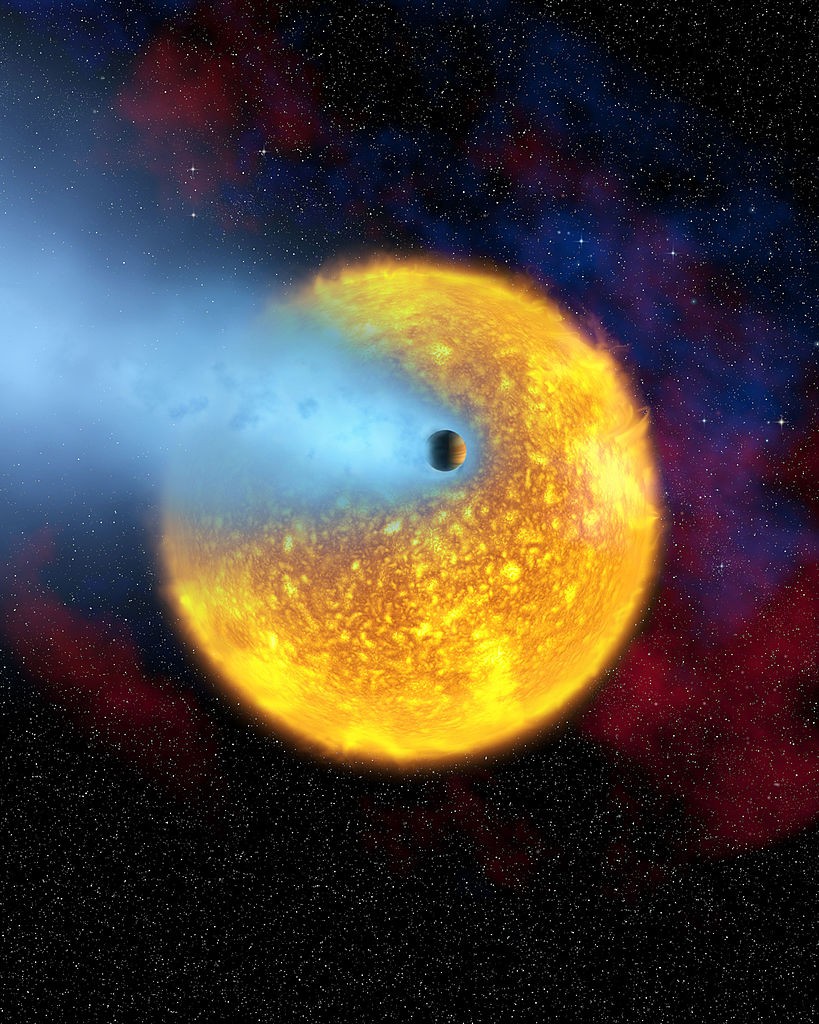What if the Earth enters a new year after every five days instead of the usual 12 months? This would surely be fun and weird at the same time because you will have to make a new year's resolution after every five days!
However, we do not live in such a world for it only occurs in a newly-discovered exoplanet, which is located around 530 light-years from our planet.

(Photo : Alfred Vidal-Madjar/ESA/NASA/Getty Images)
ARTIST'S IMPRESSION - MARCH 12: This handout image from the European Space Agency shows an artist's impression of the hydrogen atmosphere of transiting planet HD 209458b streaming off of the planet as it orbits close to its parent star on March 12, 2003.
Hot Jupiter
This newly discovered exoplanet, TOI-778 b, is an illustration of what is known as a "hot Jupiter," a planet that resembles the gas giant Jupiter, but is situated extremely close to its star, reported first by Space.com.
Due to this closeness, severe conditions can occur, such as orbits that are shorter than 10 Earth days and surface temperatures that are hot enough to melt iron.
This exoplanet travels around 5.6 million miles in its orbit around its star TOI-778. This is nearer in comparison to Mercury's proximity to the sun, which is around 29 million miles away.
Exoplanet TOI-778 b is around 2.8 times bigger and has a radius that is 1.4 times that of Jupiter.
The surface temperature of TOI-778 b, which orbits its host every 4.6 days, is believed to be roughly 2240 degrees Fahrenheit (1,500 Kelvin or 1227 degrees Celsius).
The parent star of the planet is around 71% bigger and 40% more massive than our sun. It is also worth noting that TOI-778 is a fast rotator, spinning at over 90,000 mph (40 kilometers per second).
With an estimated surface temperature of 11,600-11,780 degrees Fahrenheit (6,700-6,800 K), the 1.95 billion-year-old star is less than half as ancient as our 4.6 billion-year-old sun, according to Space.com.
The Discovery of TOI-778 b
Astronomers utilizing NASA's Transiting Exoplanet Survey Satellite (TESS) discovered TOI-778 b under the direction of Jake T. Clark of the University of Southern Queensland.
The satellite has discovered approximately 6,000 candidate exoplanets so far while conducting a study of about 200,000 nearby stars known as TESS Objects of Interest (TOI).
Two hundred eighty-two of these TOI have so far been identified as exoplanets, adding to the nearly 5,000 other known planets outside the solar system.
The team was able to identify this new hot Jupiter by observing a drop in TOI-778's light output brought on by the planet crossing its parent star from Earth's viewpoint.
TOI-778 b's planetary status was verified after the system's velocity was measured and other follow-up research was conducted using ground-based telescopes.
Additionally, the team discovered that TOI-778 b's orbit is almost perfectly centered on its dwarf star's stellar equator. They claim that the planet did not arrive at this location in a disruptive manner, but rather by slowly moving across the host star TOI-778's disk.
The research findings were published on ArXiv.
Related Article: 'Hot Jupiter:' Strange 'Cloudless' Giant Gas Exoplanent Discovered As it Passed through a Star, Thanks to WASP






